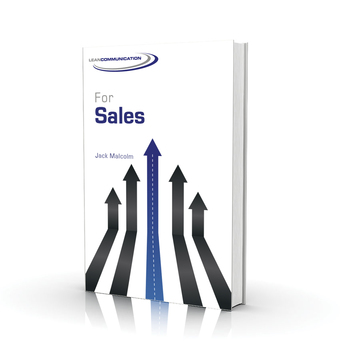Let’s be completely honest with ourselves: sometimes we give gifts to others at least as much to make ourselves look good as to make the recipient happy. For example, when you buy a bottle of wine to give to someone important, you want to get something they will enjoy, but you also want to show your good taste and sophistication.
It’s the same way with books: if there is someone you want to suck up to, maybe your boss’s boss or a prospective client, here are some book recommendations that will meet both goals. They will please the recipient and mark you as an especially discerning and intelligent person at the same time.
Thinking, Fast and Slow, by Daniel Kahneman. Kahneman is one our most important thinkers, who won the Nobel Prize in Economic Sciences for his work, even though he’s a psychologist. This book is both instructive and entertaining, and will help you understand the quirky workings of the human mind. If you’re unsure whether to give this book as a gift, think of what will happen if someone else does before you do.
Originals: How Non-Conformists Move the World, by Adam Grant. Grant is described as a top-rated teacher at Wharton, and this book shows why. There are several reasons you might not want to get this book for someone, the most important one being that it can be dangerous to be perceived as an original thinker, especially within a large organization.
Pre-Suasion, Robert Cialdini. This is the newest book by one of the acknowledged legends of the influence world. Honestly, I didn’t think it was as good as the book which he’s famous for: Influence: The Psychology of Persuasion, but giving it will make you look smart and up to date.
Superforecasting, Philip Tetlock. This book is full of practical ideas to improve your judgment and predictive ability.[1] Using the National Intelligence Council’s 7-point scale, I predict that you are almost certain to impress anyone you give this book to, especially if they think you’ve read it.
How to Fly a Horse: The Secret History of Creation, Invention, and Discovery, by Kevin Ashton. This book will fascinate and impress anyone who works in or with technology, and they might even find creative ways to thank you for it.
Thank You for Being Late: An Optimist’s Guide to Surviving in an Age of Accelerations, by Thomas Friedman. I’m breaking my own rule by recommending a book that I haven’t finished reading yet, but I didn’t want to be late in making this recommendation. If you’re concerned about the state of the world, Friedman will restore your optimism.
P.S. One of the best qualities of each of these books is that they are each so well-written that the recipient will actually read them. So, if you’re going to give one of these, it’s a good idea to buy a copy for yourself and read it!
[1] Although I have to admit I read it and still got the 2016 election wrong.
This Wednesday, I began the day by reading the sports section in the Miami Herald. Then, I went to my desk to work on my current book project about high-margin selling. Somehow the quirky chemical mixture in my brain catalyzed both those activities into the idea in this post: goals are good, but expectations are better.
The article in the sports section concerned the Miami Dolphins, who are on a six-game winning streak after beginning the season with just one win in five tries. As a fan, I’m just happy about the wins, but as a blogger I’m more impressed with how they have won. In almost all their victories their chances of winning were either bleak or severely threatened late in the fourth quarter. Two weeks ago, they looked pathetic for the first three and a half quarters against the LA Rams, and trailed 10-0 with five minutes left. Somehow, their offense came to life and they scored 14 points to win the game. Last week, they had a 17 point lead in the fourth, but had to make a last-ditch goal line stand to prevent the 49ers from tying the game in the last seconds.
The “same old Dolphins” of recent years would never have showed the resiliency to deal with adversity late in the game. The article I read explained how the culture of the team has changed under new coach Adam Gase. While the Dolphins have always wanted to win, and have gone into every game with the goal of winning, for the first time in a long time they now go into games expecting to win.
“Coach Gase came in trying to establish a winning culture,” receiver Jarvis Landry said. Now, “we go into games not hoping to win but expecting to win. When you approach the game expecting to win, that’s usually the outcome.”[1]
Even when things might have looked bleak to the fans, the players have expected to win. When quarterback Ryan Tannehill took the field with five minutes left, he told the players that they would win the game.
So, what does this have to do with high-margin selling?
Negotiating a fair price for your product or service with demanding buyers can be just as tough a game as football, one in which relative power, strategy, skill, and attitude are all critical factors in determining the outcome. The first three factors shape your expectations, and then your expectations shape your attitude.
As Wharton professor G Richard Shell says, “Research on negotiation confirms that anyone who is willing to take the time to develop higher expectations will do significantly better and do so without putting his relationship or reputation with others at risk.”
He then adds: “What is the difference between a simple goal and something that has matured into a genuine expectation? Basically one thing: your attitude.” [2]
So much has been written about the importance and the power of goal-setting, and I agree that it’s critical to set goals. However, there is a clear difference between a goal and an expectation:
- An expectation is a considered judgment, which means it’s based on hard-headed reality, on knowing and not just wanting. An expectation is “earned belief”, as Roger Bannister showed the world.
- You can choose any goal you want, but you can’t choose your expectations; they grow organically through the work and preparation you put in.
- Goals can often be extrinsic, imposed on you by others, but expectations can only be intrinsic; intrinsic beliefs put down deep roots and produce hardy plants.
Don’t get me wrong, goals are extremely useful and valuable. But expectations are even better, especially in any competitive activity that involves a clash of wills, whether it’s sports, sales, or even politics and war. That’s because your expectation shows through in the way you interact with others. The attitude that you bring to the field or negotiating table is contagious, and imbues your dealings with others with a quiet but palpable confidence. When they see your confidence despite their best efforts, it has to shake theirs a bit.
Dealing with your customer is different from sport in that it does not have to be—in fact, should not be—competitive. If you’re doing your job right, earning a higher price is not necessarily a zero-sum game in which one side wins and the other party automatically loses. That’s why if you have a reasonable expectation based on fact that your solution is better and worth the higher price, you can accord your buyer with confidence that they’re making the right decision, which is especially helpful if they have to sell the deal internally.
The resiliency the Dolphins have showed is a direct result of their expectations. Expectations cultivate conviction which in turn affects your perceptions of what happens during the process. Many things happen that can be viewed as setbacks or opportunities. When the Dolphins returner fumbled a punt on their own two yard line in the San Diego game, the defenders said to themselves, “This is exactly what we like, an opportunity to show how good we are.” It’s confirmation bias at work: if you expect to lose, anything that goes wrong is confirmation that you were right. If you expect to win, anything that goes wrong is just a minor speed bump. That attitude is at the heart of resiliency; it’s not just a refusal to surrender, it’s an incapacity to even consider surrender.
Keep on setting goals. But then get to work immediately to turn them into expectations.
[1] Read more here: http://www.miamiherald.com/sports/nfl/miami-dolphins/article117555443.html#storylink=cpy
[2] G. Richard Shell, Bargaining for Advantage, p. 24.
B2B selling is not getting any easier. Competitors are as aggressive as ever, customers are under pressure and are passing those pressures on to you, and your quotas are certainly not getting any lower. In this environment, the price battle is getting ever harder to win, and it’s extremely tempting to default to a lower price to win that big deal.
But if you’re armed with the right knowledge you can still win the price battle and preserve your margins. That’s because the key objective in this war is not your dumbest competitor’s pricing; it’s not some specified percentage over your costs; it’s the buyer’s willingness to pay (WTP). WTP is not a number—it’s a range, and you can strongly influence the extent of that range through your mastery of two topic areas: finance and psychology.
WTP is a function of economic utility and psychological factors.
Economic Utility: In business to business sales, utility is the unquestioned number one factor that determines willingness to pay, because it is the fundamental reason that customers spend and invest, and it is often the factor over which you have the most objective and tangible control.
In economic terms, an asset is worth the present value of its differential cash flows. In plain English, that means that business buyers pay dollars in the expectation of getting more dollars in return, or preventing a greater loss.
The expectation of future cash flows is based on how the buyer uses what you sell to either increase cash inflows or reduce outflows. In sales terms, that means that your effectiveness depends on a) an intimate knowledge of how your customer can increase revenues, cut costs, or reduce asset investment, and b) being able to quantify and gain agreement in measurable financial terms.
That in turn requires financial and business acumen, and in my wholly unbiased opinion the best source for that is my own book: Bottom-Line Selling: The Sales Professional’s Guide to Improving Customer Profits. It’s a “mini-MBA” that is specifically written for salespeople, which means there is nothing in it that does not pass the so what test.
Psychological factors: While economic utility sets the anchor from which the buyer perceives value, there is still a lot of room for perception (subjective factors), especially for products or services that the customer does not buy on a regular basis. If they’re buying supplies or raw materials, their expectation of the regular price is firmly set, but if they’re buying consulting services or a complex production system, they have very little experience with what things “should cost.”
What things “should” cost is a fascinating field in psychology. Here are just a few of the more important factors that affect the psychology of WTP:
Framing
As Amos Tversky said, we don’t choose between options, we choose between descriptions of options. For example, you probably would not consider it fair if a store told you that you had to pay a surcharge for using a credit card, but what if they offered you a discount for cash? The point of all this is that how the decision is framed has a significant—often decisive—effect on the final decision.
One of the most important frames in pricing psychology is loss aversion, where potential losses are weighed more heavily than potential gains. Highlighting the risks of buying a cheaper product through well-designed questions can shift the focus away from price during your sales conversations.
Anchoring
Psychologist Dan Ariely describes an experiment in which participants are first asked to write the last 2 digits of their social security number, and then to submit mock bids on items such as wine and chocolate. The half of the audience with higher two-digit numbers would submit bids that were between 60 percent and 120 percent more. The simple act of thinking of the first number sets an “anchor” that strongly influences the second, even though there is no logical connection between them.
Suppose you are proposing a solution to a problem, which will require a $500k investment. In your presentation, it’s helpful to show that you looked at several options, but be sure to list the most expensive option first. $500k will seem less if you first tell them you considered an option that would cost $700k.
Signaling
Psychologist Robert Cialdini in his book Influence, relates the story of a jeweler in Arizona who was stuck with a batch of slow-moving turquoise jewelry. Before she left town, she left a note for her assistant to mark down all the prices on it by ½. The assistant misunderstood and doubled all the prices. The entire lot sold out within days.
The old idea that you get what you pay for is so strongly ingrained in our minds, that our perceptions of value and even utility can become self-fulfilling prophecies. Studies show that the price of an aspirin can actually affect the level of reported pain relief , and even experts’ opinions of wine quality are swayed by the bottle price. Think about this before you decide to lower your price to win business. If you’re proud of having a higher price, that confidence can be contagious.
These three factors barely scratch the surface of the vast and fascinating topic of price psychology. Here are three excellent books for learning more:
Priceless: The Myth of Fair Value (And How to Take Advantage of It), by William Poundstone
Negotiating Rationally, by Max Bazerman and Margaret Neale
Predictably Irrational, by Dan Ariely
Would your prospects and customers pay to talk to you?
The only way that’s likely to happen is if they know you will bring them useful ideas to improve their business outcomes without wasting their time!
One of the recurring memes in the B2B sales world is the idea that salespeople are an endangered species, because buyers have so many alternative sources that they can tap to get the information they need to make an effective purchase decision. And with all the other demands on their time, it’s no wonder that buyers put off talking to salespeople for as long as they can.
When quantity is unlimited, quality counts more than ever. Precisely because there is so much information available and so many voices clamoring for the attention of your dream buyer, they will welcome a trusted voice who will give them just what they need when they need it without wasting their precious time.
My new e-book, Lean Communication for Sales, will help you to become that trusted voice, by showing how to communicate more value in fewer words—and become a valuable asset to your customers. As a B2B sales professional, your role is to deliver the information buyers need to make the best possible decision.
Lean Communication for Sales will help you communicate higher value with less waste by applying the principles of lean thinking to your sales communication process. You will be able to apply 9 powerful ideas as simply as ABCD:
- Add value: Leave your customers better off by Answering the Question that is on every buyer’s mind, and using Outside-in Thinking to communicate what they value the most.
- Brevity: Save time and boost credibility by putting your Bottom Line Up Front, and use the So What filter to eliminate clutter.
- Clarity: Ensure that your message is heard, understood, and remembered through Transparent Structure, Candor, and User-friendly Language.
- Dialogue: Co-create value with your buyer through effective dialogue, using Just-in-time Communication and Lean Listening.
Talk less, sell more: improve the quality of your customer conversations with Lean Communication for Sales!






